Key takeaways:
- Event success is measured more by participant engagement and community connection than by attendance numbers.
- Evaluating events through feedback and surveys provides insights that can enhance future gatherings and strengthen community bonds.
- Involving community members in planning and using social media to highlight talents fosters inclusivity and increases engagement.
- Timely feedback collection helps in capturing genuine reactions, enabling better planning for future events.

Understanding Event Success
Event success can often feel elusive, like trying to catch a fleeting moment on the dance floor. Reflecting on my own experiences, I remember a breakdancing event I organized where the turnout was smaller than expected. Despite the intimate crowd, the energy was palpable, reminding me that quantity doesn’t always equate to quality.
When evaluating event success, I consider not just attendance numbers but also participant engagement. Did people leave feeling inspired? That remains the heart of any event. I once hosted a workshop where participants shared their struggles, leading to genuine connections. As I think back on that day, I realize that the impact we create can often be measured in smiles and stories rather than statistics.
Have you ever left an event feeling like a part of something bigger? For me, that sense of community was a defining moment during one competition. Even though some technical details didn’t go as planned, the passion and dedication evident among the breakdancers overshadowed any shortcomings. It’s these moments that make me ponder—what does success truly mean in the context of our breakdancing community?
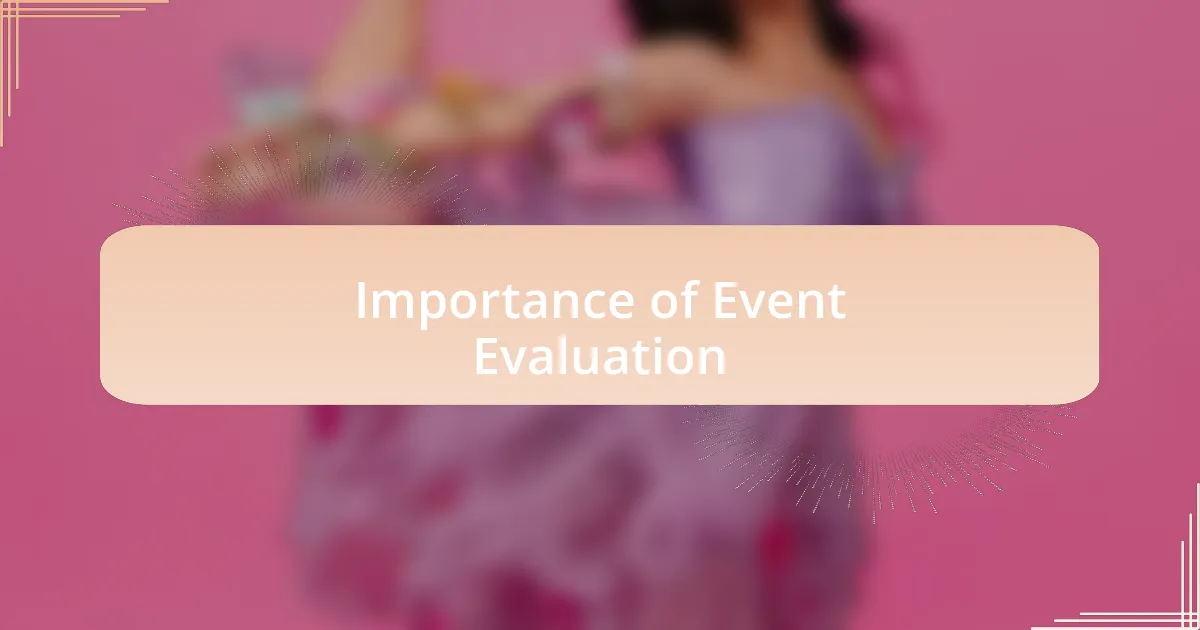
Importance of Event Evaluation
Evaluating an event is crucial to understanding its true impact. In my experience, I’ve noticed that feedback can reveal surprising insights about what worked. After a recent jam, I was taken aback by participants’ comments about the atmosphere we created. It reminded me that sometimes, it’s the vibe that defines an event, not just the line-up of dancers.
Moreover, assessing event success helps us pinpoint areas for improvement. I remember a competition where the judging criteria were confusing for participants. By collecting feedback, I discovered how we could clarify expectations and enhance future events. Isn’t it fascinating how one small adjustment can elevate the entire experience for everyone involved?
Ultimately, event evaluation fosters a sense of growth within the community. Reflecting on my past events, I’ve often asked myself—how can we better serve our breakdancing family? Each evaluation not only shapes our next gathering but also strengthens the bonds we share. It’s a continuous cycle of learning, adapting, and thriving together on this vibrant journey.
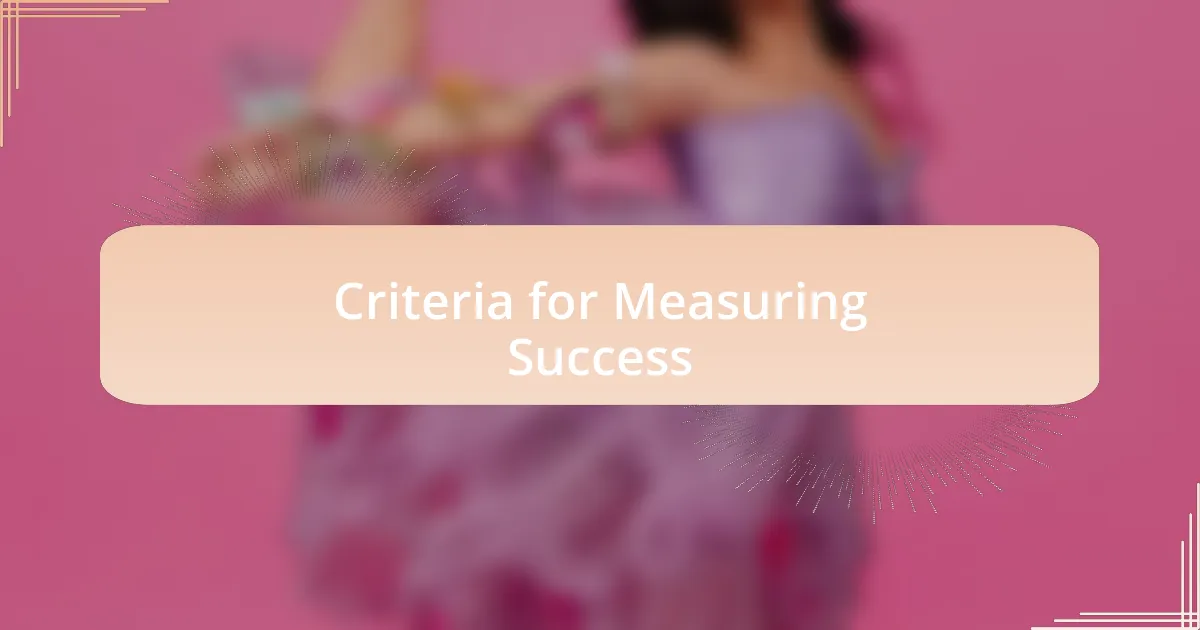
Criteria for Measuring Success
When it comes to measuring success, I often focus on participant engagement as a primary criterion. I recall an event where the energy in the room was electric; people weren’t just watching, they were cheering and interacting. Seeing that level of enthusiasm reinforced my belief that a successful event isn’t solely about the dancers but also about how deeply the audience connects with the performance.
Another vital aspect I consider is the diversity and inclusivity of participants. At one jam, I noticed a wide range of skill levels and backgrounds represented, which created a richer environment. I thought, how amazing is it that breakdancing brings together so many unique stories? It’s a reminder of our collective strength and creativity as a community.
Finally, I evaluate the logistical smoothness of the event. A few months ago, a local battle was almost derailed by a last-minute venue change. However, we pulled together seamlessly, and the competition proceeded without a hitch. That experience taught me that effective communication and preparation are key indicators of success, as they directly impact the overall enjoyment for everyone involved. How do we ensure that logistical aspects don’t overshadow the dance? It all comes down to proactive planning and adaptability.
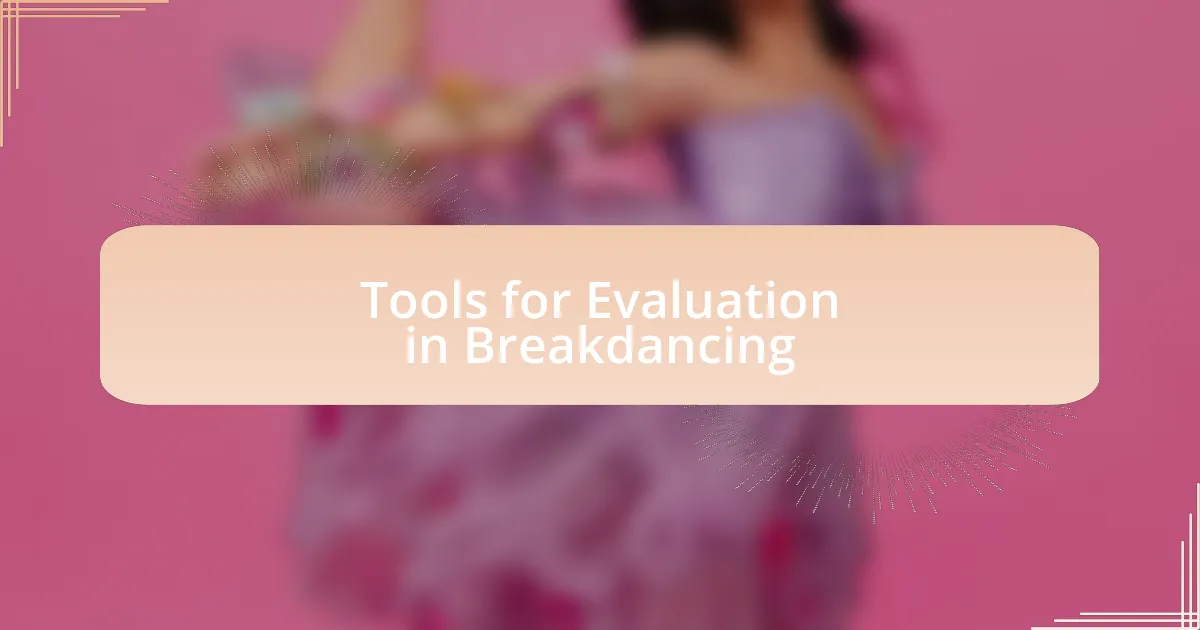
Tools for Evaluation in Breakdancing
When it comes to evaluating an event in the breakdancing community, I’ve found that feedback tools can be incredibly effective. After one battle, I distributed short surveys to both participants and audience members. I was amazed at how much insight I gained from their responses—a common theme was the desire for more workshops. Don’t you think this highlights the importance of understanding what our community truly seeks?
Social media analytics provide another layer of evaluation that I often leverage. A while back, I noticed a dramatic uptick in video shares from one of my events on Instagram. This really opened my eyes to how online engagement mirrors on-ground excitement. It made me wonder, could our digital footprint be as vital to our success as the event itself?
Lastly, I’ve tapped into community-driven platforms, like local breakdancing forums, to gather post-event discussions. I remember reading heartfelt testimonials from dancers who shared how an event inspired them to improve their skills. This kind of organic feedback is invaluable; it not only creates a sense of belonging but also shows that our efforts are resonating on a deeper level. Isn’t it rewarding to see our passion reflected in the experiences of others?
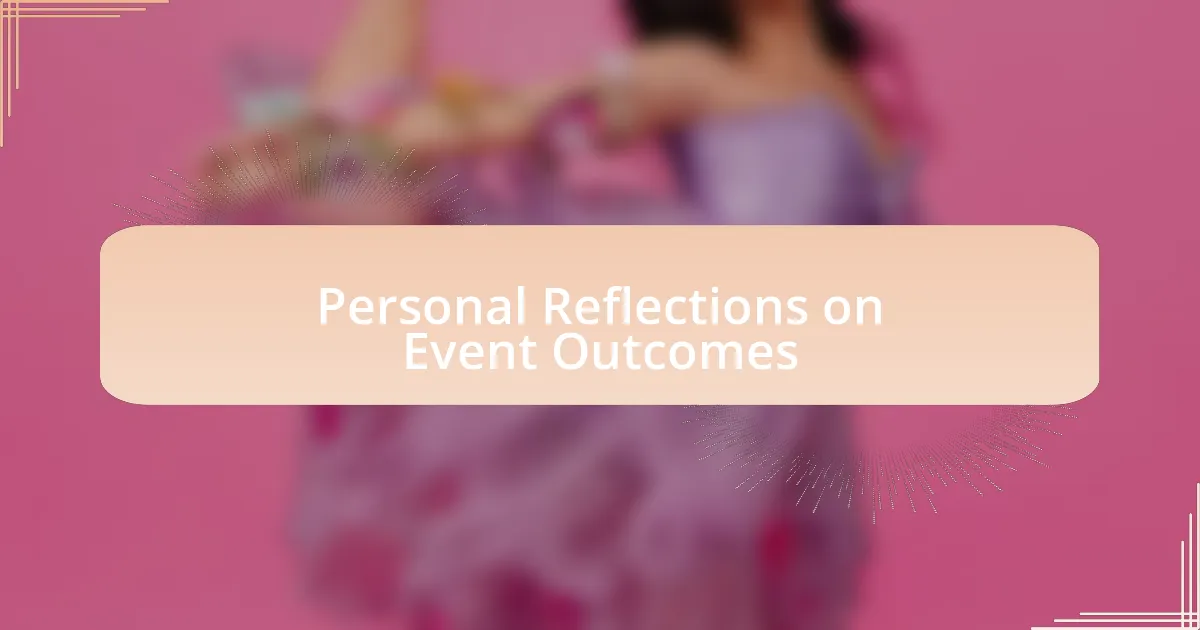
Personal Reflections on Event Outcomes
Reflecting on the outcomes of our events often leaves me with mixed emotions. After one particularly vibrant jam, I took a moment to chat with some of the younger dancers who had participated. Their eyes lit up as they shared how the experience motivated them to practice harder. It struck me just how powerful our gatherings can be—not just as competitions, but as catalysts for personal growth. Have you ever noticed how a single event can spark a lifetime of passion?
Looking back, I remember an event where the energy was electric, but the attendance was lower than expected. At first, I felt disheartened. However, conversations afterward revealed that those who did show up had an unforgettable time, bonding over shared experiences and skills. It made me consider: is it the number of attendees or the quality of engagement that truly defines success? I began to see that creating lasting connections often outweighs the sheer volume of participants.
One event, in particular, was memorable for the stories that emerged afterward. I received a message from a dancer who said that a spontaneous cypher at the end changed their outlook on competition. They expressed that it felt more like a community than a contest. Moments like these solidify for me why we organize these events—it’s about building community rather than just showcasing talent. Isn’t it amazing how each event can leave such a lasting imprint on people’s lives?
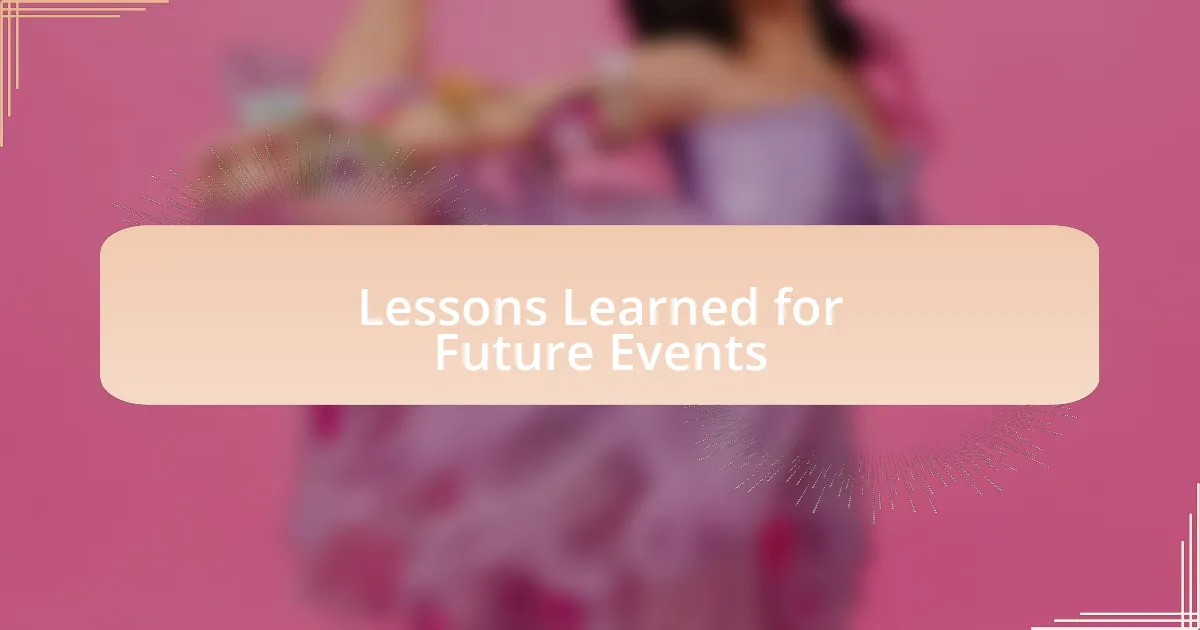
Lessons Learned for Future Events
Reflecting on my experiences, one key lesson is the importance of pre-event communication. I recall a time when we hastily promoted an event without clear messaging on what participants could expect. The result? Many newcomers felt unsure about joining. I now prioritize clear, accessible communication in our promotions. Wouldn’t you agree that transparency can help ease potential participants’ nerves?
Another insight revolves around the significance of diverse programming. I remember when we focused solely on battles, which, while exciting, didn’t cater to everyone. Some participants expressed a desire for workshops or community discussions. This feedback led me to embed various activities in future events, enriching the experience for all attendees. Isn’t it fascinating how catering to different interests can enhance community spirit?
Lastly, collecting feedback immediately after events has proven invaluable. I once waited too long to reach out for impressions, missing the chance to capture raw, honest reactions. Now, I aim to engage participants right away, gathering insights that help shape our next plans. Have you ever thought about how timely feedback can be a game changer for future success?
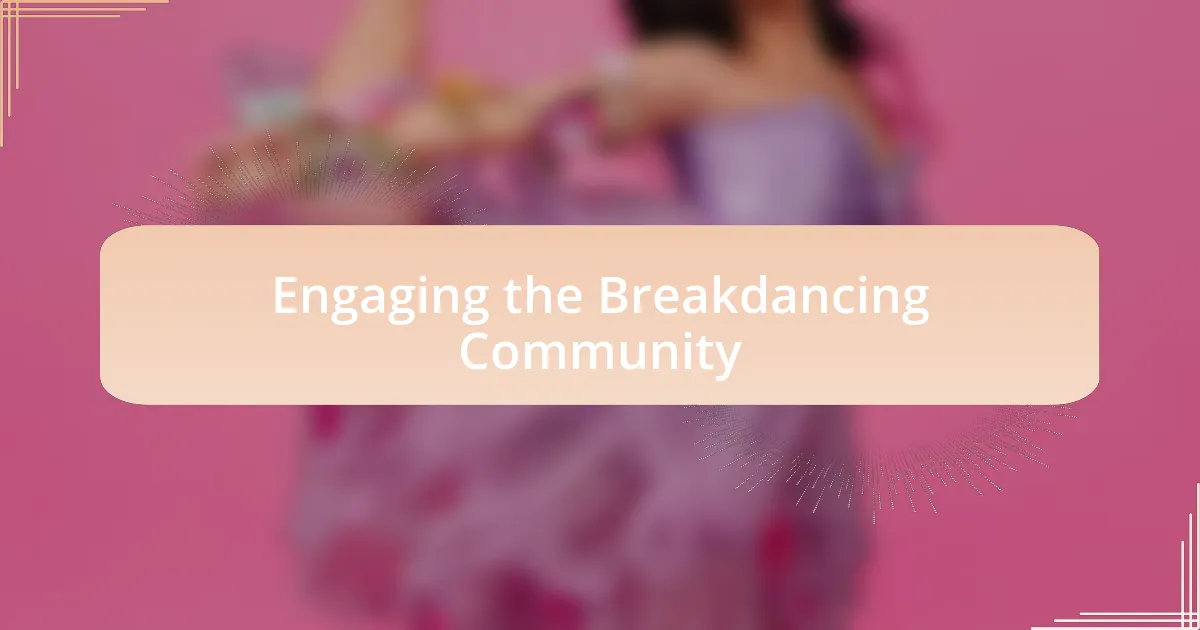
Engaging the Breakdancing Community
Engaging the breakdancing community isn’t just about organizing events; it’s about creating a vibe where everyone feels welcomed. I recall attending a local jam where the energy was palpable, and everyone, from seasoned b-boys to curious onlookers, felt they could join in. That experience taught me the power of accessibility and inclusivity in our community gatherings. Have you ever arrived at a place and felt like you belonged instantly?
One approach I’ve found particularly effective is involving community members in the planning process. I remember hosting a brainstorming session before one of our major events, where participants shared their ideas for activities and workshops. The result was a richer agenda that resonated with more dancers. It was heartwarming to see faces light up when their suggestions were incorporated. Don’t you think that when people feel ownership of an event, their investment in its success grows?
Lastly, using social media to spotlight our community’s talents has transformed how we engage. After showcasing a dancer’s performance on our platforms, I noticed a surge in interactions, with people not only praising the dancer but also expressing interest in attending the next meetup. It’s thrilling to see our community rally around one another through likes and shares. Isn’t it amazing how a simple post can ignite enthusiasm and spark connections?